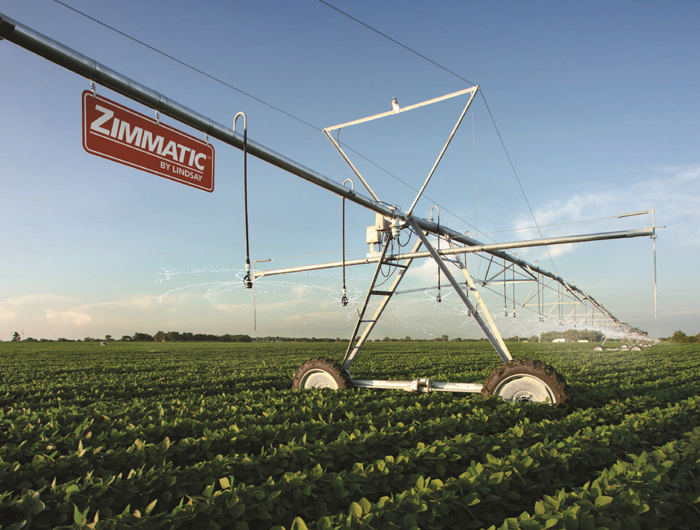
With rising electricity prices, producers are hard-pressed to find a way to cut down on their electricity consumption as it pertains to performing certain operations on their farms. One aspect of farming where growers typically look to cut electricity usage is irrigation.
Doing this, though, is easier said than done. Most producers rely on municipal or Eskom electricity or in some cases their own generators to power their pivots, pumps and other pieces of equipment required for irrigation procedures. This, of course, means that they need to budget these costs into their calculations when determining their profitability. If this energy cost can be brought down, producers will be in a position to make a greater profit – which is desirable for obvious reasons.
Water is pumped and therefore, if less water is needed, the cost will be lower. It is important to remember that if you are saving water, you usually are saving other inputs such as fertiliser also. If you apply more water than necessary, the fertilisers present in the soil will move out of the root zone and not be able to be absorbed by the plants.
But just how much are producers currently spending on electricity to perform irrigation cycles on their farms? A recent survey found that producers are currently spending about R2 000/ha to R3 500/ha to irrigate their fields – and this cost is projected to increase over the next few years. In a country like South Africa, electricity conservation is especially important so as to help avoid rolling blackouts in the form of load shedding too.
One way in which producers can decrease their electricity costs, is to make use of new, innovative irrigation systems and technologies. Using a high-quality pivot, like a Zimmatic, holds many advantages. But perhaps one of the most appealing advantages for growers is that they can reduce the amount of water required to irrigate fields. This means pumps don’t need to run for as long as they would with other, less accurate pivots. The pivot itself will also not need to be powered for as long, seeing as its irrigation cycle is controlled.
These days, software is also available to help producers plan their irrigation cycles. One such piece of cloud-based software is FieldNET. This revolutionary system uses in-field data to accurately determine exactly when producers should irrigate their fields. The software can produce automated irrigation plans that can be sent to a grower’s irrigation equipment with the click of a button.
Moreover, FieldNET allows a grower to control a pivot remotely. This is useful in situations where it suddenly starts to rain. If a pivot is busy irrigating during rainfall, a producer can easily switch the pivot off from anywhere using FieldNET. This will save resources like water and electricity, seeing as the pivot is no longer required to complete its irrigation cycle.
One might ask how proper irrigation planning and automated cycles can help cut down on electricity bills. Well, since FieldNET allows producers to always irrigate for precisely the right amount of time, they won’t have to worry about wasting resources like electricity and water with irrigation cycles that do not aid the quality of their harvests.
In short, less runtime is required to effect proper irrigation in fields, which ultimately leads to less electricity used.
A recent survey showed that FieldNET has the ability to save growers as much as 17% in input costs. These costs include the use of electricity, which clearly demonstrates how the software can assist a producer’s bottom line.
Another way in which producers can decrease their electricity consumption is by making use of variable rate irrigation systems (VRI). These systems quite literally vary the rate of water application, depending on the nature of the field within which it is operating. A VRI pivot, for instance, won’t irrigate unused patches on a field, but it will continue to irrigate the rest of the field that has been planted with crops. According to a calculator on the Zimmatic website, the VRI solution can save producers anywhere between 32% and 50% in input costs associated with irrigation.
Even if producers don’t have these technologies on their farm, they can reduce electricity costs by planning their irrigation cycles in a more thorough manner. This can be done by logging records of past irrigation cycles, which should be reviewed when the next cycles are planned. Ensuring that irrigation times and applications are as effective as possible, means pivots run with refined precision, thereby reducing unnecessary irrigation time.
Obaro has an in-house irrigation team that takes care of producers’ various irrigation needs, whether it be drip irrigation, micro irrigation or hubs. The irrigation division also supports Obaro’s 26 trading branches across five provinces in South Africa with technical advice and training.
Planning and research are the starting point for new irrigation systems and a change or upgrade of current irrigation systems. The Obaro irrigation team provides specialised services to help producers that include the following:
- Help with the planning of a new or upgrading of the current irrigation system.
- A detailed survey of the planned irrigation area and surface with highly sophisticated surveying equipment.
- The physical design of the specific system, including systems such as dust control and frost control.
- All products for the project are provided as well as the project management.
The irrigation team always wants to be aligned with the producer’s goals and needs. By doing that, the designed system will be the best for the producer and will help ensure that the efficiency and effectiveness of the system will contribute to long-term sustainability.
Sustainability goes hand in hand with specialist knowledge, farming expertise, the latest technology, and top quality products. The Obaro irrigation team will incorporate these aspects in the planning, design or upgrade of irrigation systems to be able to lower electricity cost and indirectly the total production cost of the crop with an end result of higher profit per hectare.
Producers who are looking to change their approach to irrigation can contact the Obaro irrigation design team at 012 381 2800 or Zimmatic to find out more about energy-saving solutions.




























